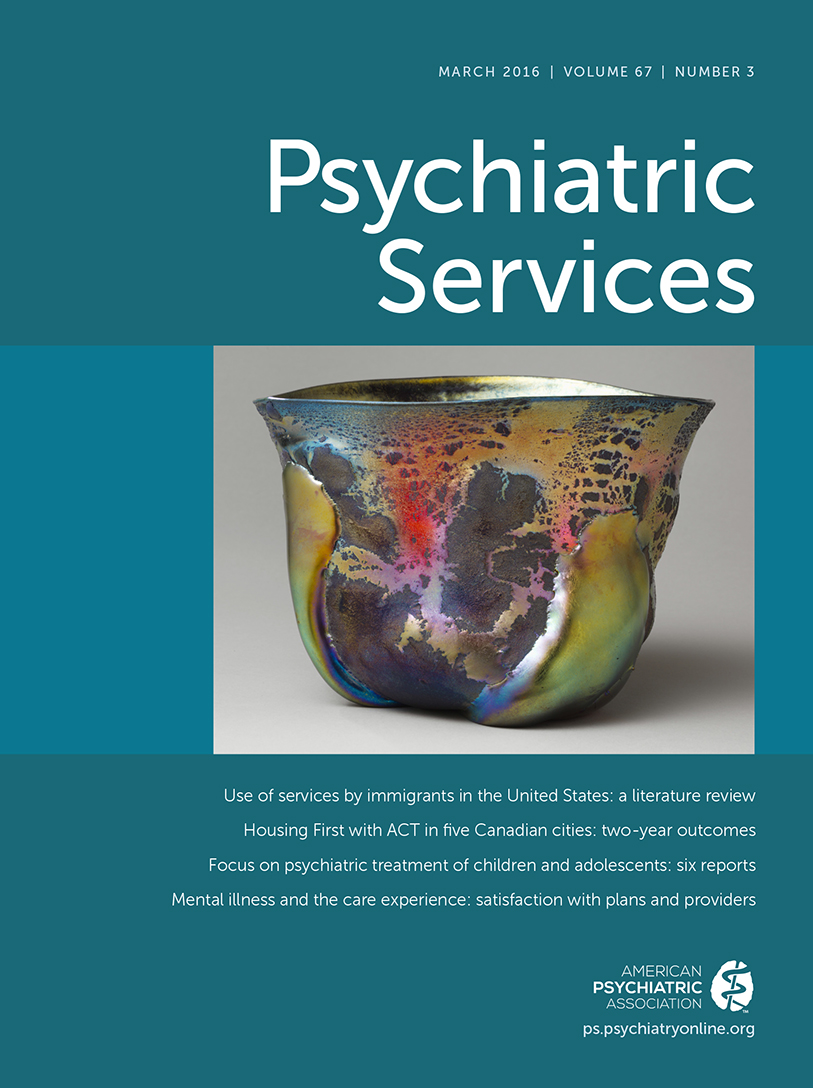This Month’s Highlights
Service Use by Immigrants in the United States
Immigrants and their children constitute 24% of the U.S. population, and their mental health concerns have implications for the overall health of the nation. Research has shown that immigrants access mental health care at rates far below the rate in the general population. To inform future efforts to address barriers to care among immigrants, Amelia Seraphia Derr, M.S.W., Ph.D., reviewed 62 reports of empirical studies of service use by immigrants in the United States. Findings underscore the low utilization rates found previously, especially among men, the uninsured, and the undocumented, and highlight the importance of social support among immigrants, many of whom turn first to family, friends, or religious leaders for help with mental health problems. Three areas for research to mitigate disparities are proposed: expand designs to examine the heterogeneity of immigrant experiences, study interventions that foster collaboration between formal and informal sectors, and examine the role of social support in problem recognition and treatment initiation (page Original article: 265).
Housing First: Two-Year Outcomes in Canada
Since Housing First emerged in the 1990s as an alternative response to homelessness, the model has been widely implemented in the United States. Recently, researchers in five Canadian cities have been testing Housing First combined with assertive community treatment (ACT). Tim Aubry, M.A., Ph.D., and colleagues report two-year outcomes of a randomized controlled trial in which 950 participants with serious mental illness who were homeless or precariously housed were randomly assigned to either Housing First with ACT or treatment as usual. Housing First participants entered housing more quickly and had longer housing tenures. They also reported higher quality of life and were assessed as having better community functioning. However, both groups had similar outcomes in terms of mental health and substance use. “From a policy perspective,” the authors conclude, “the choice becomes to either implement Housing First and significantly reduce homelessness while having a modest effect on mental health and addiction or to provide treatment first, then housing, with similar clinical outcomes but inferior housing outcomes” (page Original article: 275).
Mental Illness and the Care Experience
Ensuring that patients have a positive health care experience is central to the “triple aim,” and patients’ experience is widely used as a measure of quality. Patients’ interactions with their health plans and the administrative processes they must follow to obtain care are important aspects of the health care experience. Using data from the 2004–2012 Medical Expenditure Panel Surveys, Kathleen Rowan, Ph.D., and Nathan D. Shippee, Ph.D., compared data for nearly 8,000 respondents who reported episodic or persistent mental illness and more than 17,000 respondents who reported no mental illness. Rates of problems with health plans were high for all respondents, specifically for treatment approvals, finding information, and customer service—and the rates were higher among persons with mental illness. Respondents reported lower rates of problems with providers than with plans, but those with mental illness were more likely to report provider problems, specifically that doctors do not explain treatment options, respect treatment choices, or seek participation in decisions (page Original article: 282).
Focus on Children
Six articles focus on the treatment of children. Among commercially insured children prescribed SSRIs (N=51,948), Greta A. Bushnell, M.S.P.H., and colleagues found that less than a third were initiated on a low dose, contrary to guidelines regarding potential suicide risk (page Original article: 302). Among children with elevated symptoms of mania (N=416), Andrea S. Young, Ph.D., and colleagues found that 12-month treatment retention was predicted by white race and whether parents perceived that treatment was a good match for the child’s needs (page Original article: 310). Among privately insured youths with depression (N=61,599), Rene Soria-Saucedo, M.D., Ph.D., and colleagues found that 42% went untreated, and less than 3% received combined psychotherapy and medication (page Original article: 316). Among Medicaid-covered children who had been hospitalized for a mood disorder (N=7,826), Cynthia A. Fontanella, Ph.D., found that one in three did not receive any mental health follow-up in the 30 days after discharge, a troubling statistic given the high risk of suicide during this period (page Original article: 324). Among adolescents (N=373) hospitalized for suicide risk, Ewa K. Czyz, Ph.D., and colleagues found that rehospitalization in the next year predicted a more severe course of suicidal ideation, including future suicide risk. Finally, in the Open Forum, William B. Daviss, M.D., and colleagues describe the serious side effects of antipsychotics among children and call for research on potentially safer pharmacological and psychosocial interventions (page Original article: 339).



